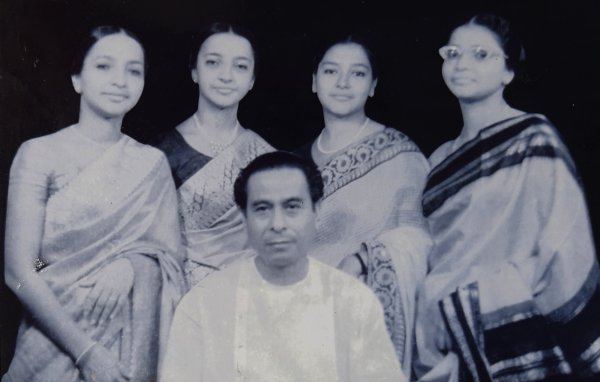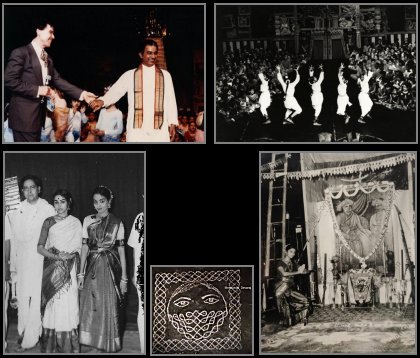Guru Bipin Singh (1918 – 2000), a director, choreographer and scholar of Manipuri dance, is regarded as Father of Manipuri style for more reasons than one. First, he displayed an early flair for ordinal skill (i.e., naming the elements he could identify in the traditions of Lai Haraoba as well as Nata Sankirtan and the seven Ras Leelas that could be amalgamated in the emerging Manipuri form); ordinal skill (i.e., deciding relative importance to be attached to each element); and interval skill (i.e., determining how much or how little he would attach depth and duration to each element). To this could be added his formidable combinatorial skill (i.e., resolving what the most aesthetic combination would be that would genuinely enrich the newly emerging style and its holistic expression).....
Darshana summarises her approach as follows: "The lifelong creative contribution of Guru Bipin Singh to widen the horizon of classical Manipuri dance is unparalleled.The vast knowledge of tradition of Ras and Sankirtan, in-depth study of Shastras and his creative genius with aesthetic sensibility enabled him to create repertoire including training courses and choreographies for stage presentation. Guru Pratistha has tried to bring out the beauty and richness of a few of his rare choreographies, having roots in the tradition of Ras and Sankirtan of Manipur. The eight segments of Guru Pratistha are: 1. Nritya Siksha (teaching system), 2. Nrittabandha (pure dance), 3. Prabandha (musical composition), 4. Tandava (male form), 5. Kirti Prabandha (mukhbol-poem), 6. Gaman (gaits), 7. Anukriti (interpretative dance) and 8. Shevadhi (dedication). Each segment is interpreted by Darshana Jhaveri and Sanjib Bhattacharya, disciples of Guru Bipin Singh, through their experiences, as the process behind each creation of his."
Pl provide your name and email id along with your comment




